 W
WGeorge Bain (1881–1968), born in Scrabster in Caithness, Scotland, was an artist and art teacher who made an important and influential contribution to the revival of interest in Celtic and Insular art which began in the 19th century
 W
WJames Bridie was the pseudonym of a Scottish playwright, screenwriter and physician whose real name was Osborne Henry Mavor. He took his pen-name from his paternal grandfather's first name and his grandmother's maiden name.
 W
WFlorence St John Cadell was a Scottish artist and patriot, involved in the early days of the Scottish National Party with her friend Wendy Wood. Her artworks are usually signed St John Cadell, disguising her femininity.
 W
WErik William Chisholm was a Scottish composer, pianist, organist and conductor sometimes known as "Scotland's forgotten composer". According to his biographer, Chisholm "was the first composer to absorb Celtic idioms into his music in form as well as content, his achievement paralleling that of Bartók in its depth of understanding and its daring", which led some to give him the nickname "MacBartók". As composer, performer and impresario, he played an important role in the musical life of Glasgow between the two World Wars and was a founder of the Celtic Ballet and, together with Margaret Morris, created the first full-length Scottish ballet, The Forsaken Mermaid. After World War II he was Professor and Head of the South African College of Music at the University of Cape Town for 19 years until his death. Chisholm founded the South African College of Music opera company in Cape Town and was a vital force in bringing new operas to Scotland, England and South Africa. By the time of his death in 1965, he had composed over a hundred works.
 W
WArchibald Joseph Cronin, known as A. J. Cronin, was a Scottish physician and novelist. His best-known novel The Citadel (1937) tells of a Scottish doctor in a Welsh mining village, who then shoots up the medical ladder in London. Cronin knew both venues, as a medical inspector of mines and as a doctor in Harley Street. The book describes some medical ethics that helped to inspire the National Health Service. Another popular mining novel of his, set in the North East of England, is The Stars Look Down. Both have been filmed, as have Hatter's Castle, The Keys of the Kingdom and The Green Years. His 1935 novella Country Doctor inspired a long-running BBC radio and TV series, Dr. Finlay's Casebook (1962–1971), set in the 1920s. There was a follow-up series in 1993–1996.
 W
WDavid Foggie RSA, was a Scottish painter, born to parents James and Margaret Foggie.
 W
WSir Patrick Geddes was a Scottish biologist, sociologist, Comtean positivist, geographer, philanthropist and pioneering town planner. He is known for his innovative thinking in the fields of urban planning and sociology.
 W
WLewis Grassic Gibbon was the pseudonym of James Leslie Mitchell, a Scottish writer. He was best known for A Scots Quair, a trilogy set in the north-east of Scotland in the early 20th century, of which all three parts have been serialised on BBC television.
 W
WNeil Miller Gunn was a prolific novelist, critic, and dramatist who emerged as one of the leading lights of the Scottish Renaissance of the 1920s and 1930s. With over twenty novels to his credit, Gunn was arguably the most influential Scottish fiction writer of the first half of the 20th century.
 W
WHamish Scott Henderson (11 November 1919 – 9 March 2002; was a Scottish poet, songwriter, communist, intellectual and soldier.
 W
WViolet Jacob was a Scottish writer known especially for her historical novel Flemington and for her poetry, mainly in Scots. She was described by a fellow Scottish poet Hugh MacDiarmid as "the most considerable of contemporary vernacular poets".
 W
WWilliam Lamb RSA was a British sculptor and artist. He was a survivor of the "lost generation" who came of age in 1914, and was scarred, both mentally and physically, by the First World War.
 W
WDr Archibald "Archie" Lamont was a Scottish geologist, palaeontologist, Scottish Nationalist writer, poet and politician. He named the trilobite genus Wallacia after William Wallace.
 W
WNorman Alexander MacCaig DLitt was a Scottish poet and teacher. His poetry, in modern English, is known for its humour, simplicity of language and great popularity.
 W
WChristopher Murray Grieve, best known by his pen name Hugh MacDiarmid, was a Scottish poet, journalist, essayist and political figure. He is considered one of the principal forces behind the Scottish Renaissance and has had a lasting impact on Scottish culture and politics. He was a founding member of the National Party of Scotland in 1928 but left in 1933 due to his Marxist–Leninist views. He joined the Communist Party the following year only to be expelled in 1938 for his nationalist sympathies. He would subsequently stand as a parliamentary candidate for both the Scottish National Party (1945) and British Communist Party (1964).
 W
WJames Pittendrigh MacGillivray was a Scottish sculptor. He was also a keen artist, musician and poet. He was born in Inverurie, Aberdeenshire, the son of a sculptor, and studied under William Brodie and John Mossman. His works include public statues of Robert Burns in Irvine, Lord Byron in Aberdeen, the 3rd Marquess of Bute in Cardiff, John Knox in Edinburgh's St Giles Cathedral, and William Ewart Gladstone in Coates Crescent Gardens, Edinburgh.
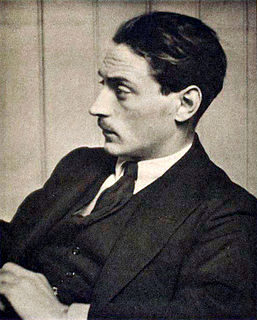 W
WSir Edward Montague Compton Mackenzie, was an English-born Scottish writer of fiction, biography, histories and a memoir, as well as a cultural commentator, raconteur and lifelong Scottish nationalist. He was one of the co-founders in 1928 of the National Party of Scotland along with Hugh MacDiarmid, RB Cunninghame Graham and John MacCormick. He was knighted in 1952.
 W
WSorley MacLean was a Scottish Gaelic poet, described by the Scottish Poetry Library as "one of the major Scottish poets of the modern era" because of his "mastery of his chosen medium and his engagement with the European poetic tradition and European politics". Nobel Prize Laureate Seamus Heaney credited MacLean with saving Scottish Gaelic poetry.
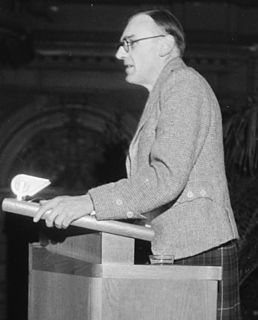 W
WJoseph Todd Gordon Macleod (1903–1984) was a British poet, actor, playwright, theatre director, theatre historian and BBC newsreader. He also published poetry under the pseudonym Adam Drinan.
 W
WNaomi Mary Margaret Mitchison, Baroness Mitchison was a Scottish novelist and poet. Often called a doyenne of Scottish literature, she wrote over 90 books of historical and science fiction, travel writing and autobiography. Her husband Dick Mitchison's life peerage in 1964 entitled her to call herself Lady Mitchison, but she never did. Her 1931 work, The Corn King and the Spring Queen, is seen by some as the prime 20th-century historical novel.
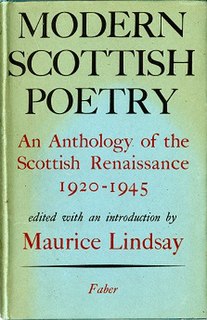 W
WModern Scottish Poetry: An Anthology of the Scottish Renaissance 1920-1945 was a poetry anthology edited by Maurice Lindsay, and published in 1946 by Faber and Faber.
 W
WEdwin George Morgan was a Scottish poet and translator associated with the Scottish Renaissance. He is widely recognised as one of the foremost Scottish poets of the 20th century. In 1999, Morgan was made the first Glasgow Poet Laureate. In 2004, he was named as the first Makar or National Poet for Scotland.
 W
WEdwin Muir was a Scottish poet, novelist and translator. Born on a farm in Deerness, a parish of Orkney, Scotland, he is remembered for his deeply felt and vivid poetry written in plain language and with few stylistic preoccupations.
 W
WWilla Muir aka Agnes Neill Scott born Willa Anderson was a Scottish novelist, essayist and translator. She was the major part of a translation partnership with her husband, Edwin Muir. She and her husband translated the works of many notable German-speaking authors including Franz Kafka. They were given an award in 1958 in their joint names; however, Willa recorded in her journal that her husband "only helped".
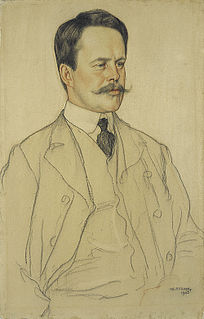 W
WNeil Munro was a Scottish journalist, newspaper editor, author and literary critic. He was basically a serious writer, but is now mainly known for his humorous short stories, originally written under the pen name Hugh Foulis. The best known of these stories are about the fictional Clyde puffer the Vital Spark and her captain Para Handy, but they also include stories about the waiter and kirk beadle Erchie MacPherson and the travelling drapery salesman Jimmy Swan. They were originally published in the Glasgow Evening News, but collections were published as books. A key figure in Scottish literary circles, Munro was a friend of the writers J. M. Barrie, John Buchan, Robert Bontine Cunninghame Graham and Joseph Conrad, and the artists Edward A. Hornel, George Houston, Pittendrigh MacGillivray and Robert Macaulay Stevenson. He was an early promoter of the works of both Conrad and Rudyard Kipling.
 W
WThe Scottish Community Drama Association (SCDA) is an association of amateur dramatic clubs throughout Scotland. It was first founded in 1926. Amateur theatre companies in Scotland have generally presented repertoire in English, Lowland Scots and, more occasionally, Scottish Gaelic.
 W
WAnna "Nan" Shepherd was a Scottish Modernist writer and poet, best known for her seminal mountain memoir, The Living Mountain, based on experiences of hill walking in the Cairngorms. This is noted as an influence by nature writers who include Robert Macfarlane and Richard Mabey. She also wrote poetry and three novels set in small fictional communities in Northern Scotland. The landscape and weather of this area played a major role in her novels and provided a focus for her poetry. Shepherd served as a lecturer in English at the Aberdeen College of Education for most of her working life.
 W
WWilliam Soutar was a Scottish poet and diarist who wrote in English and in Braid Scots. He is known best for his epigrams.
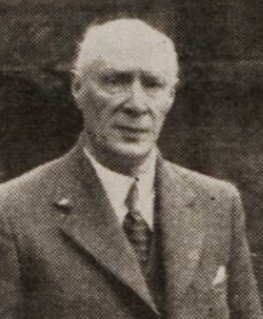 W
WJames Lewis Thomas Chalmers Spence was a Scottish journalist, poet, author, folklorist and occult scholar. Spence was a Fellow of the Royal Anthropological Institute of Great Britain and Ireland, and vice-president of the Scottish Anthropological and Folklore Society. He founded the Scottish National Movement.
 W
WWendy Wood, born Gwendoline Emily Meacham, was a campaigner for Scottish independence. An eccentric and colourful figure, she was also a gifted artist, sculptor and writer, and her theatrical political activism often created controversy.
 W
WDouglas Cuthbert Colquhoun Young was a Scottish poet, scholar, translator and politician. He was the leader of the Scottish National Party (SNP) 1942-1945, and was a classics professor at McMaster University and the University of North Carolina at Chapel Hill.